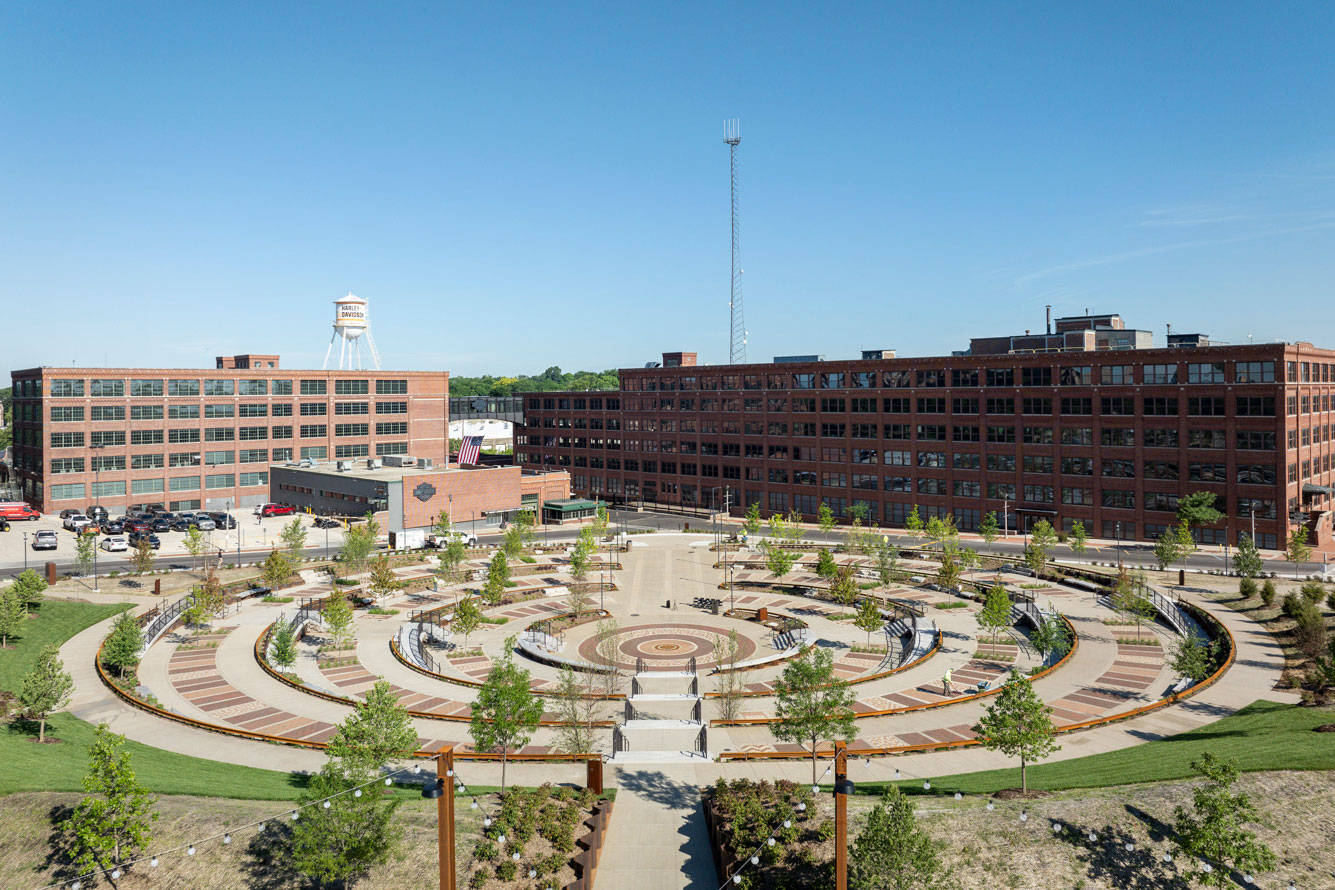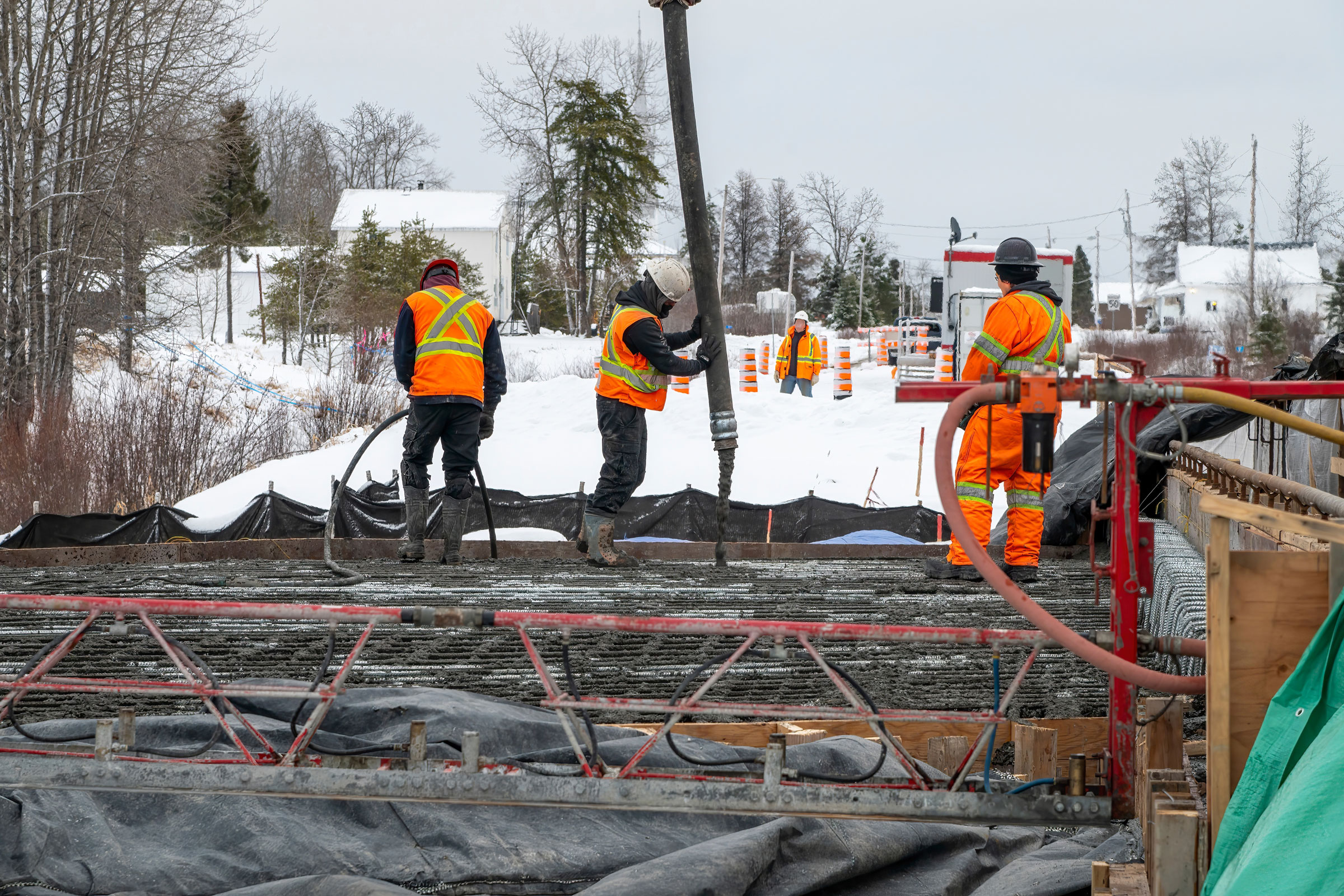Story at a glance:
- HGA and Heatherwick Studio designed the new Harley-Davidson park with an emphasis on sustainability.
- The project involved collaboration from the Potawatomi and neighborhood community.
- The park merges the legacy of the motorcycle manufacturer with local needs.
Davidson Park, a new 4.8-acre campus in Milwaukee near the site of Harley-Davidson’s original headquarters on Juneau Avenue, opened to the public in summer 2024.
The Harley-Davidson Foundation, the philanthropic arm of the motorcycle giant, funded and spearheaded the park, with design and construction by internationally acclaimed firms Heatherwick Studio; HGA, architect and engineer of record; and Greenfire Management Services, who served as the contractor.
The goal of the $20 million project, according to Tori Termaat, president of the Harley-Davidson Foundation, was to make the city’s Near West Side neighborhood safer and a way to engage those in the community. “Over 120 years ago the first motorcycle was built in these buildings, which is super cool,” she says. “We wanted to create a campus for our employees, for the community, and for our riders.”
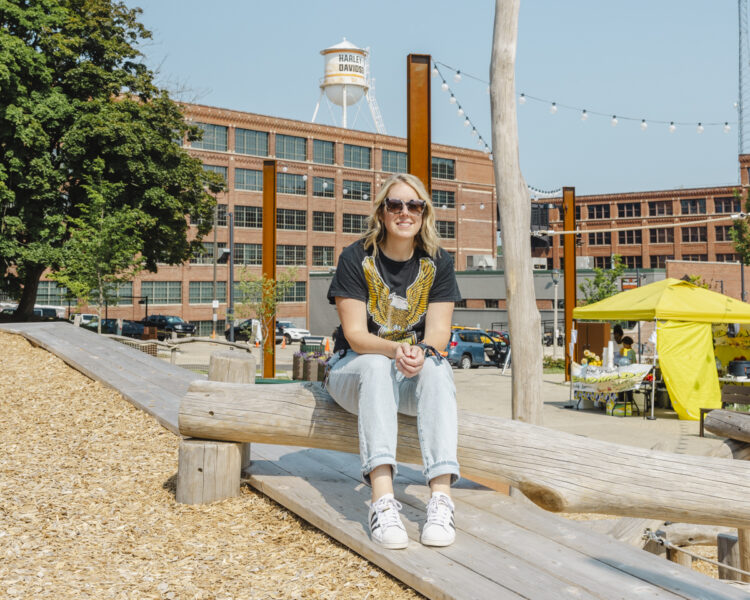
Tori Termaat, president of the Harley-Davidson Foundation. Photo by Chris Howe
From the outset of the ambitious project, sustainability was top of mind and a clear goal for the finished park. “The most important thing was that Harley wanted to create a space that was there to support the neighborhood, their employees, and their customers to show their commitment to Milwaukee and a commitment to sustainability,” says Eliot Postma, partner and group leader at Heatherwick Studio. “The big-picture sustainable piece was making sure these 100-year-old buildings—amazing architectural assets—remain relevant and remain this amazing destination for the brand for another 100 years.”
At the heart of Davidson Park is The Hub, which consists of a sunken events space and an amphitheater, constructed with 10 types of locally sourced brick, natural waney-edge timber, and weathered steel. The red brick, Postma explains, was used to complement the old brick buildings, which act as a backdrop for the park.
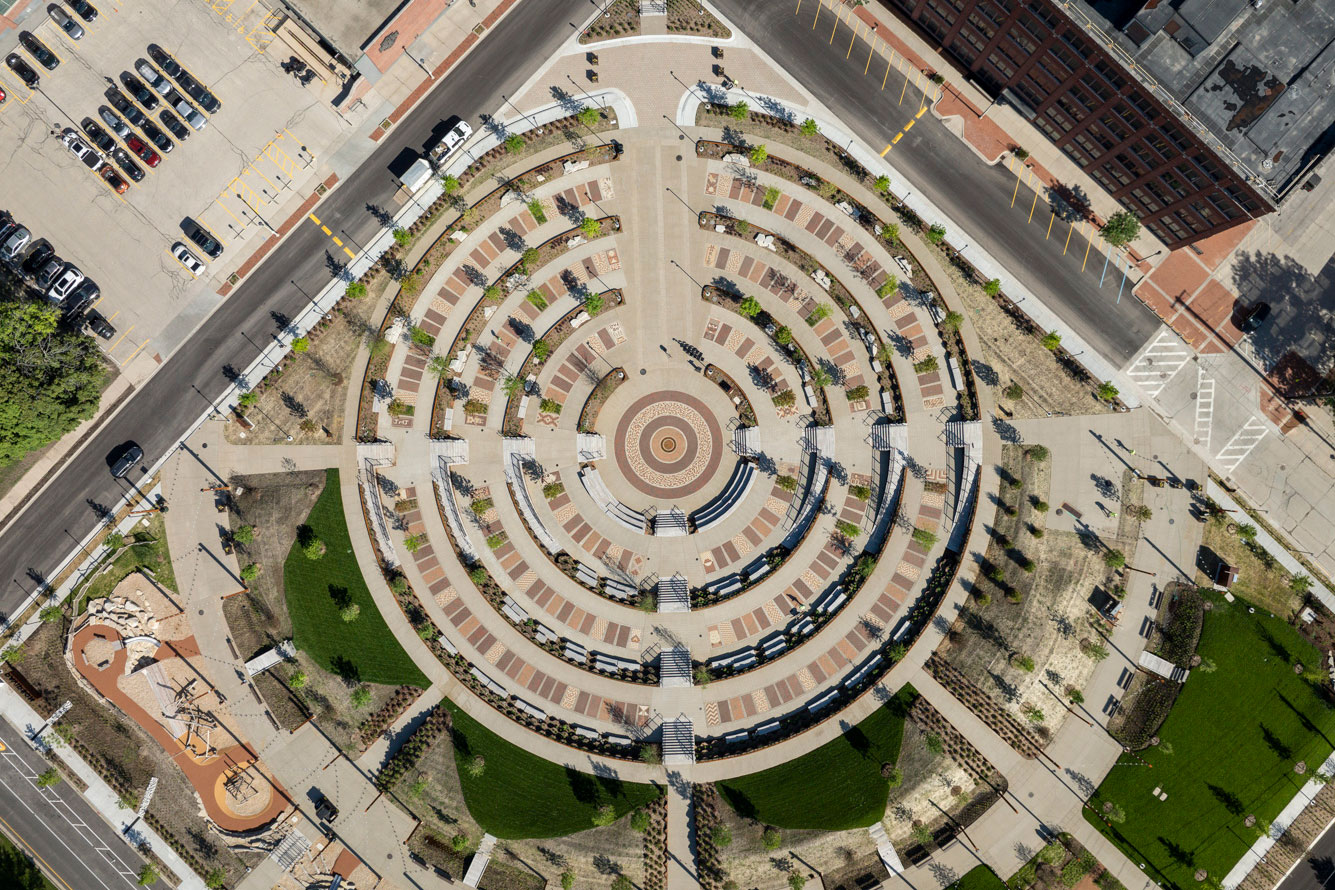
Photo courtesy of Harley-Davidson Foundation
Peter Balistrieri, principal and corporate market sector leader at HGA, says that because these were native lands, they had had the opportunity to overlay meaning into the design process, choosing plant species that were native to the area. With that in mind the design included plenty of green space with lush plants and trees and integrated native bioswales, permeable pavers, and cisterns to capture hundreds of thousands of gallons of stormwater. “We met with the Forest County Potawatomi to talk about what was germane, not only from a cultural standpoint, but from a planting standpoint, including the culture of the Potawatomi, and how we might overlay that into the project,” he says.
Because Milwaukee County has a combined storm and sewer system, often problems managing water arises when there are heavy rainfalls. “Stormwater is a really intentional focus on capture and percolation into the land, and slow release was a big focus for the team,” Balistrieri says. “Pervious pavements, bioswales, and stormwater detention systems divert an incredible amount of water from flowing right into the storm system during a surge event, and so that’s probably one of the biggest physical impacts the site has.”
The conversations with the Potawatomi then turned to what’s regional to the area, from material and a specification standpoint, as the design team wanted to keep everything local.
“We tried to keep the craftsmanship and the talent that comes with that—the plantings, the native species, the energy use with the site, and the lighting strategy,” Balistrieri says. “It’s an environment where a lot of people collect and need to be seen and be safe, so we wanted to be smart with lighting, but we also wanted to be sensitive to the amount of energy we’re using. We really pushed the boundaries where we could, and we were able to really engage in a process through the USGBC called SITES.”
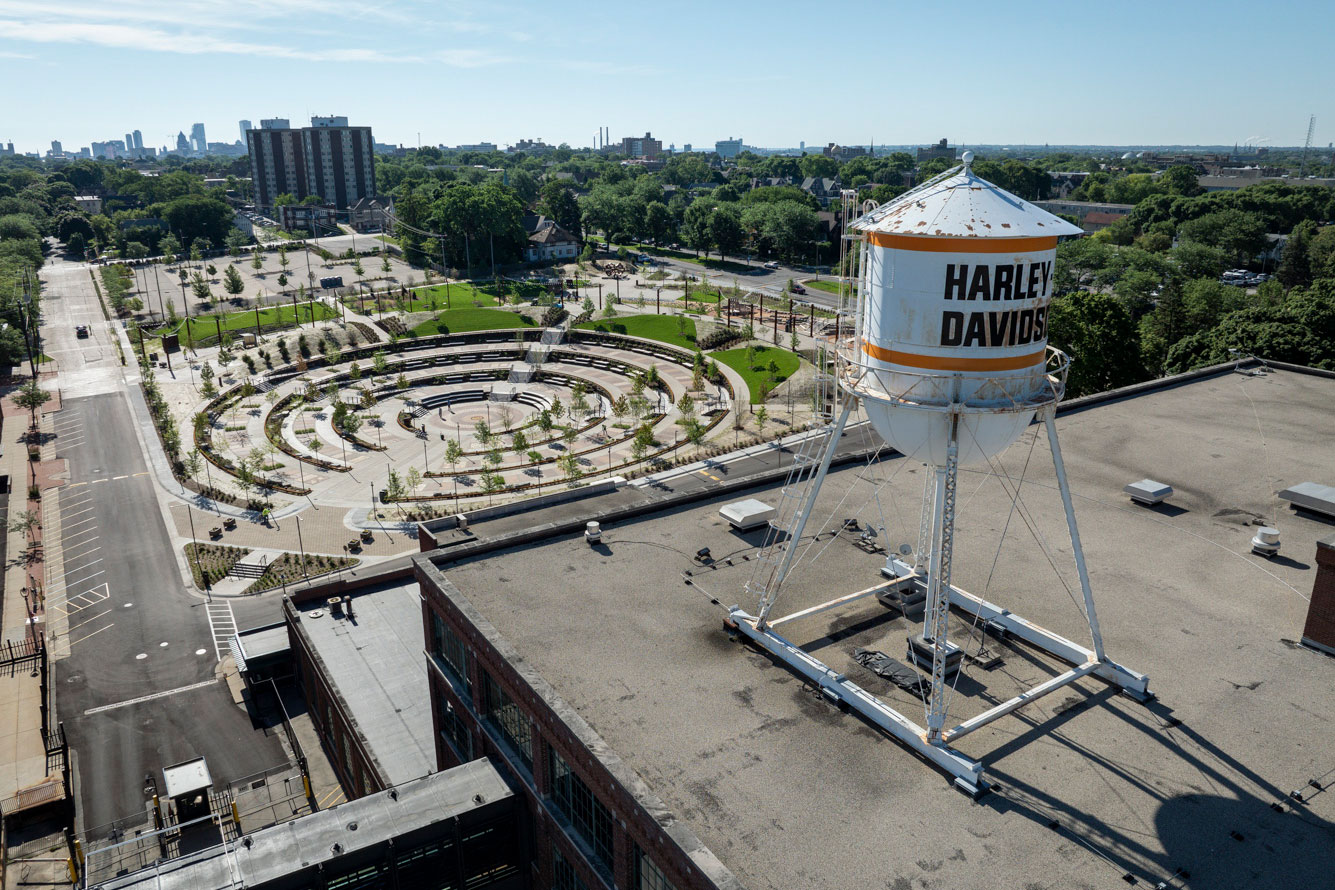
Photo courtesy of Harley-Davidson Foundation
With materials, the goal was again to utilize locally sourced materials as much as possible. “All the wood timbers on the stairs and the benches tied to the park are sourced locally, and the sheet pile steel we used to provide the earth retention systems are what’s in place around here for all the waterways that we have in Milwaukee,” Balistrieri says. “Harley had done a big pervious pavement location in their parking lot and we were able to reuse some of the previous paving.”
The site is currently looking to become one of the first in Wisconsin to achieve SITES certification.
The biggest challenge was excavation, carving out 30 feet in the earth, and dealing with the old foundations and infrastructure from the aging neighborhood, but that presented minor issues, and the whole project went rather smoothly, so much so that the park was finished under budget.
The part of the project that made Postma smile most was working with Milwaukee Institute of Art and Design student Megan Huss, who helped design the park’s Foundation Stone—a cast-iron relief plate that of sits at the very center of the site, with schoolchildren lending a hand.
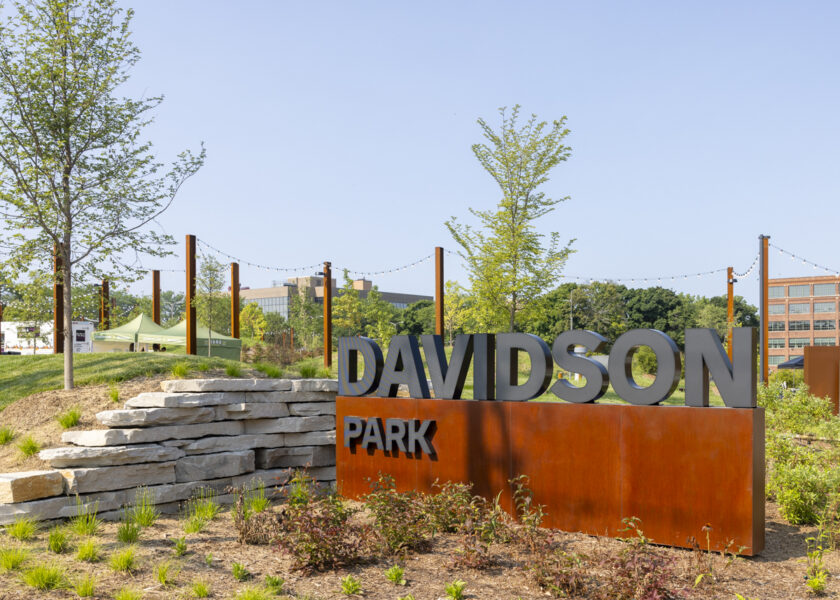
Davidson Park is a 4.8 acre public park on Harley-Davidson’s corporate campus in Milwaukee’s Near West Side neighborhood. Photo by Chris Howe
“We designed these brick patterns almost like a paint by numbers kit with 10 different tones of brick, and then we had these defined rectangular bays that we were doing different patterns within,” he says. “In 25 different bays we worked with the children on the patterns and creating motifs and drawings that were then reinterpreted and laid out in the brickwork. It just gives these really lovely moments of detail dotted around the park.”
For Balistrieri, creating a park that could be enjoyed by all, while paying tribute to the legacy of the brand and the community was what made this project something special. “This was an amazing opportunity to breathe some new life into the Harley-Davidson campus,” he says.
Project Details
Project: Davidson Park
Location: Milwaukee
Completion: June 2024
Size: 4.8 acres
Cost: $20 million
Design Architect: Heatherwick Studio
Architect of Record: HGA
Engineer: HGA
Contractor: Greenfire Management Services
Civil Engineer: HGA
Landscape Architect: HGA
Chris Howe contributed to this reporting.

